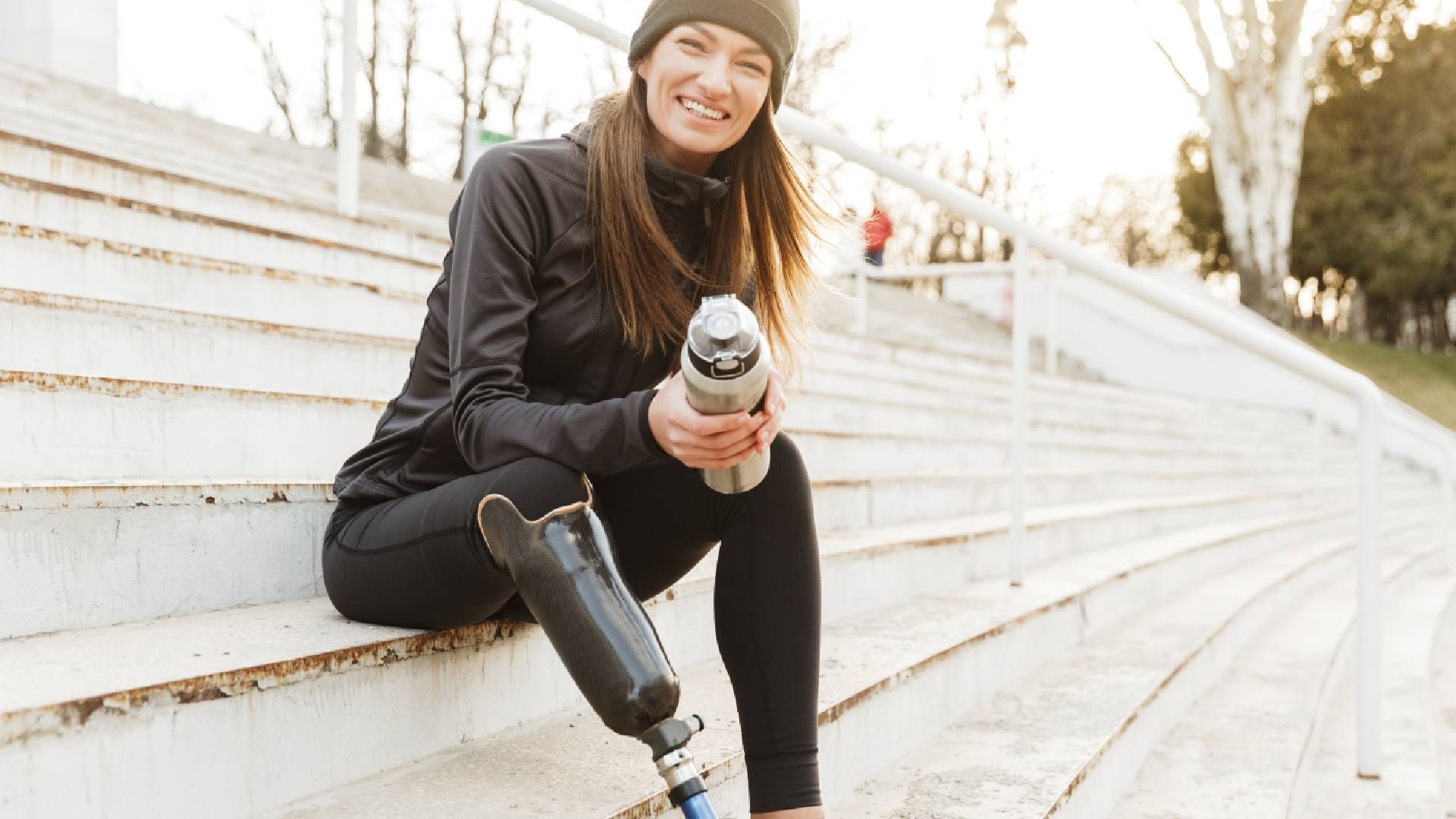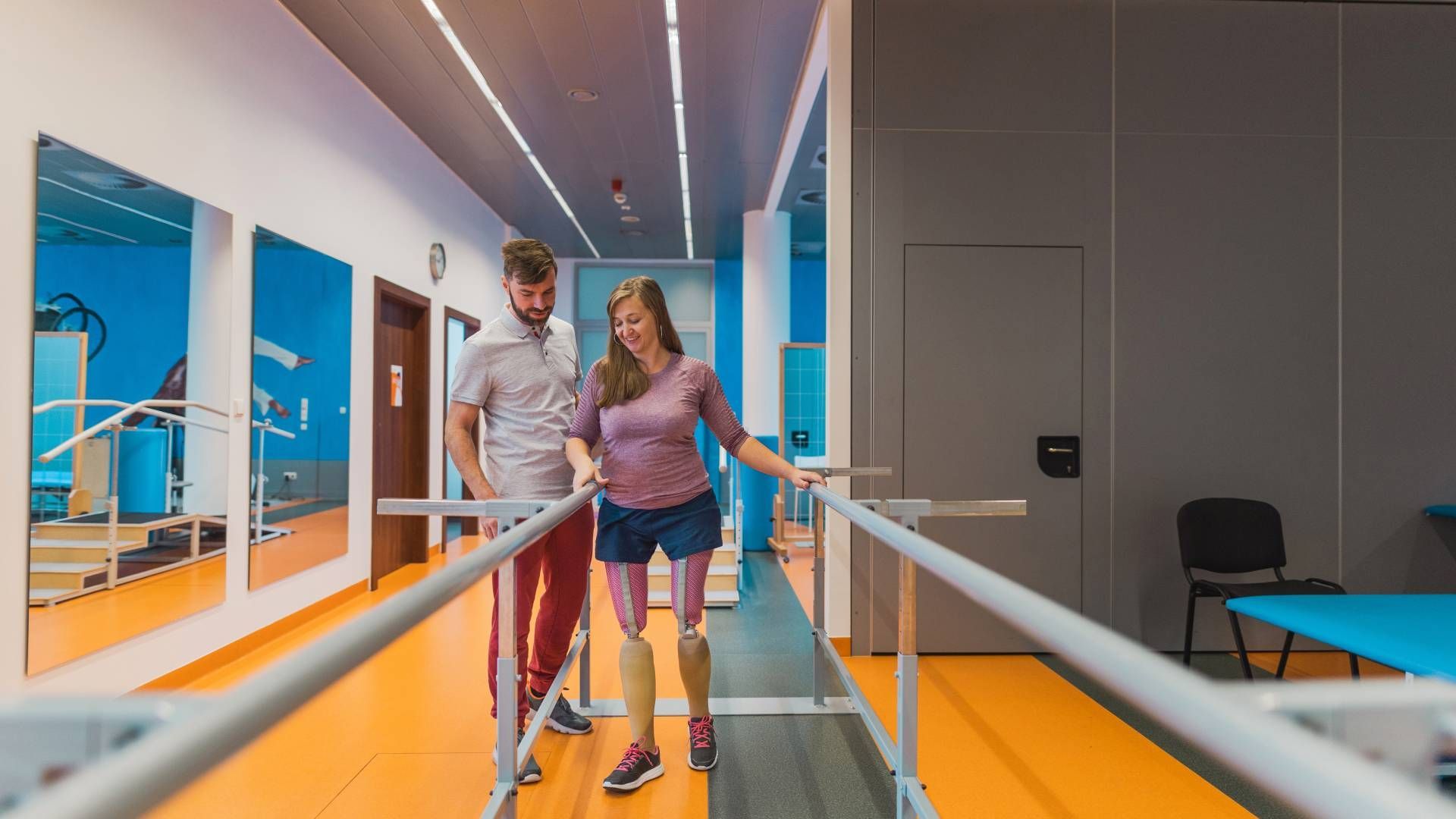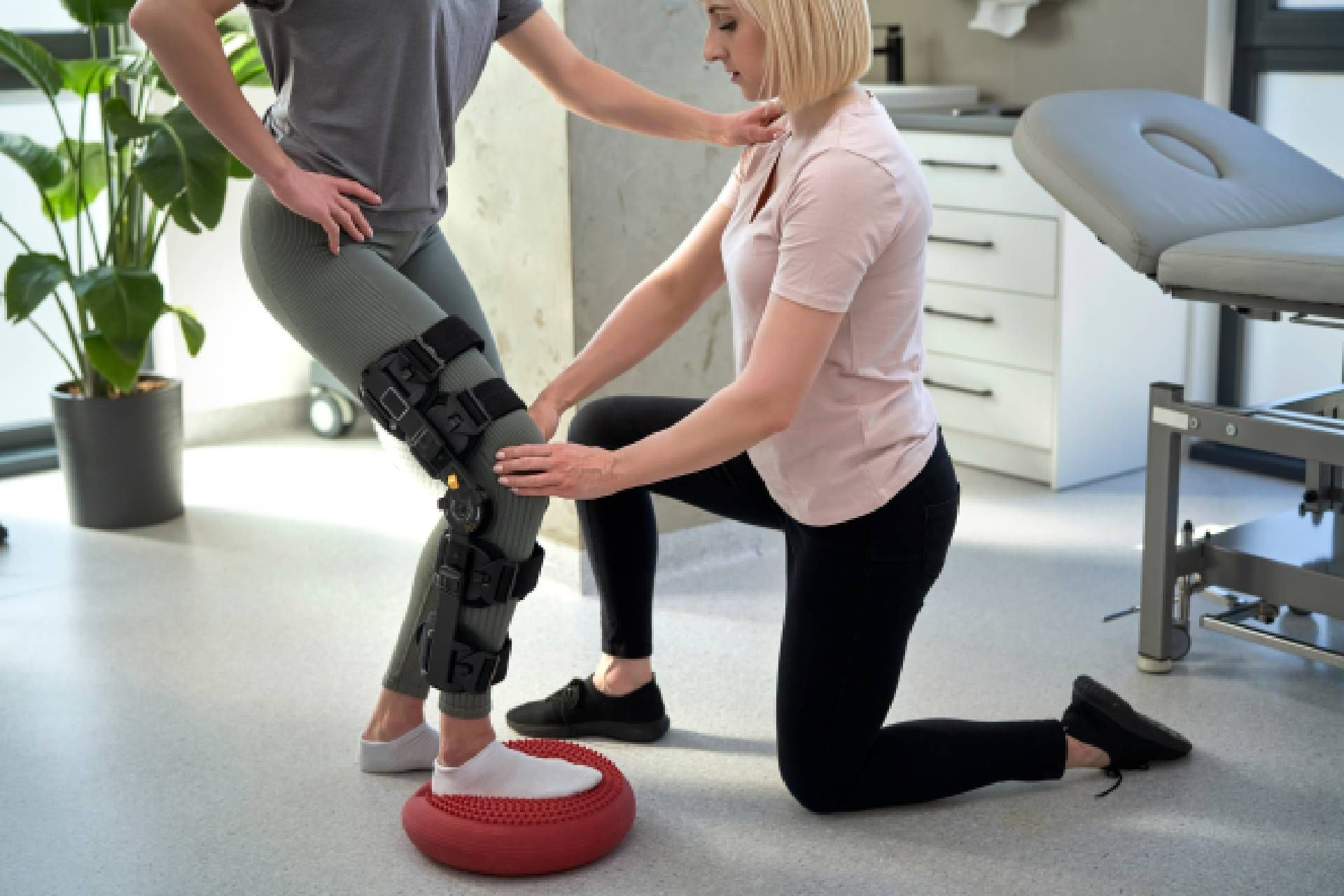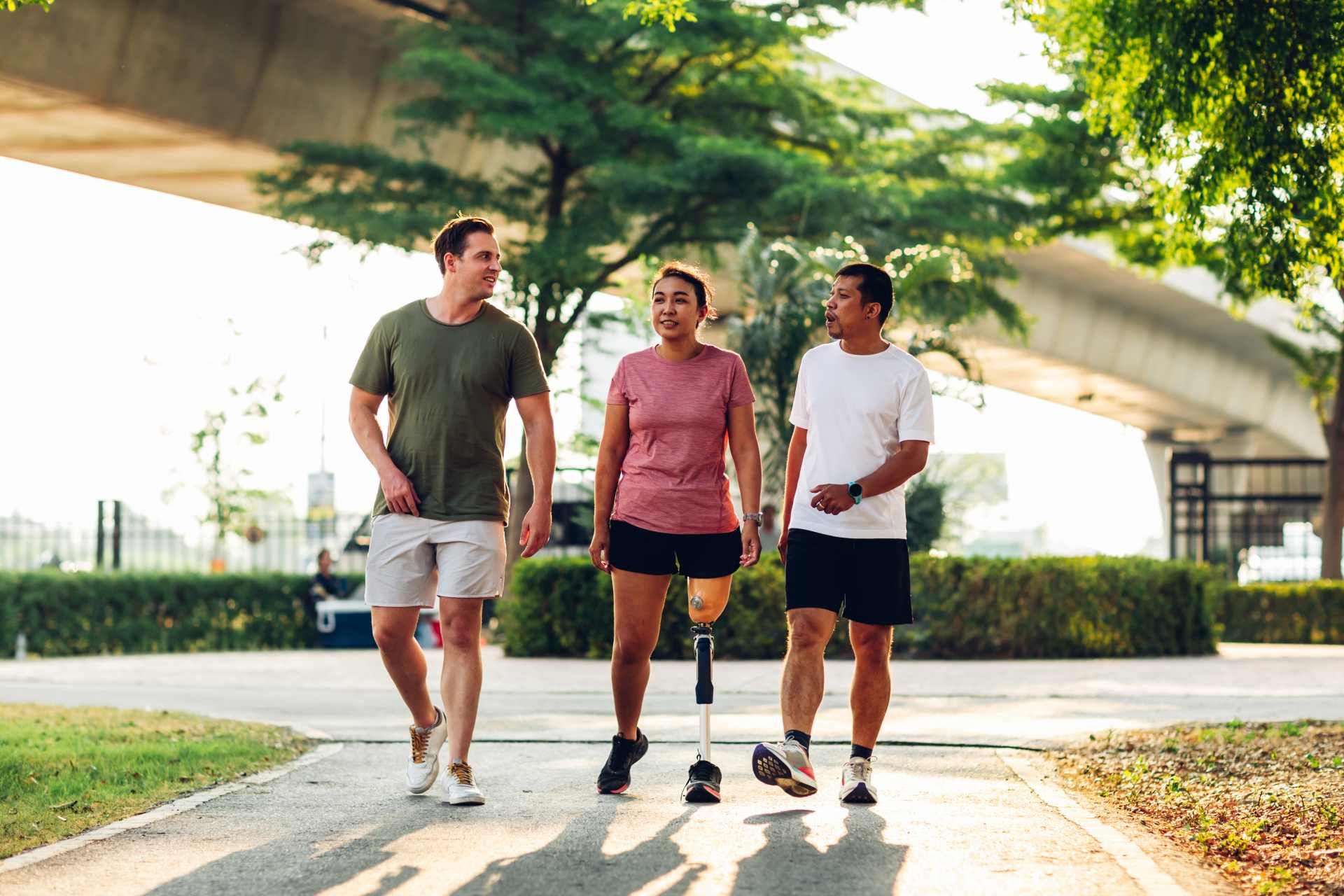When it comes to prosthetic care, there are many different factors to keep in mind. From device care to skincare and regular check-ins with your medical team, you have a lot to manage with your prosthesis in addition to your other healthcare priorities.
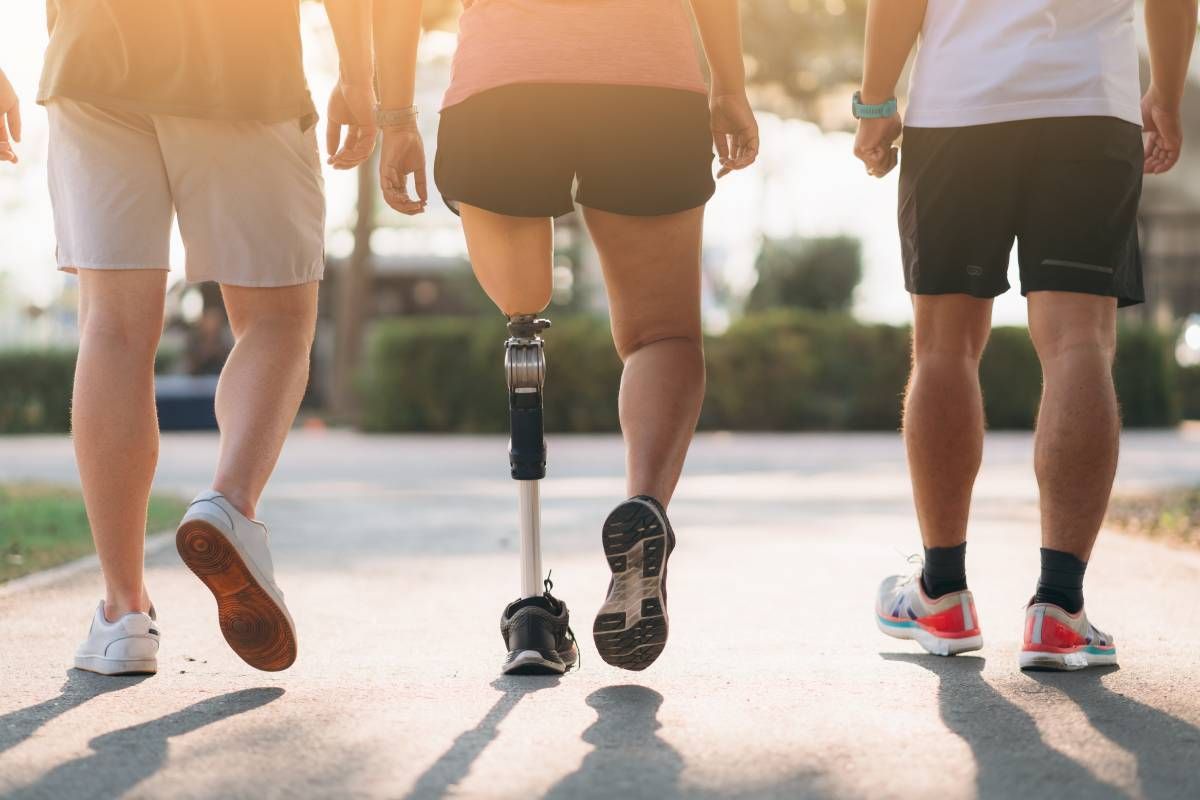
That’s why working with an expert medical team like our Certified Prosthetist Orthotists can make all the difference in the quality of your care. We asked our team members at Kenney Orthopedics to put together some tips for wearing and caring for your prosthetic limb.
3 Tips for Caring for a Prosthetic Device
A prosthetic limb is a complex medical device, and its proper care and maintenance is necessary for long-term performance. Allot some time every day to keep up on prosthetic care, and always feel free to reach out to your health care team with any questions or concerns—we’ll always be happy to help you with any questions so that you can live your best life.
1. Wash Daily
The oils on our skin can create an issue for prosthetic limbs, as our body’s natural oils will build the foundation for lingering dirt and grime on a prosthetic device. It is important to keep the components clean, so wash and dry any part of your prosthetic device that contacts skin directly.
2. Keep an Eye on your Prosthetic
You should take the time to do a visual inspection of your prosthetic limb daily. Look for any visible issues from signs of discoloration, which can indicate molding or mildew, to mechanical issues like loose screws. Often large issues start as small problems, so a daily inspection can help you catch complications early on.
3. See your Prosthetist Regularly
Regular visits with your prosthetist and healthcare team not only ensure that your prosthetic limb is in good condition but will also make sure your residual limb is healthy. These visits give you a chance to address any physical issues or healthcare questions you have about using your specific prosthetic device.
3 Tips for Wearing a Prosthetic Limb
Once you know your device is in good working order, the next step is developing good habits when using your prosthetic. If you’re feeling uncertain or unprepared to use your prosthetic limb, or if you’re simply looking to build up your skill level, consider the learning opportunities available at a Kenney Orthopedics Walking School.
1. Prioritize Residual Limb Care
Taking care of your residual limb is key to proper prosthetic use. Always make sure your residual limb is clean and dry before putting on your prosthetic. Watch out for signs of skin problems like blisters, bruising, or rashes, and keep an eye on changes to the size and shape of your limb as well.
2. Be Prepared for Problems
Keep an emergency kit with you that has items to address common issues that come up when wearing a prosthetic limb. This can include extra socks, dry washcloths, bandages, and any ointments you use for skin care (like antibiotic rubs or antihistamine creams).
3. Learn to Trust Your Body
It's important to become comfortable using your prosthetic limb while maintaining a high level of self-awareness. Establish tentpoles of comfort that help you indicate proper fit when wearing your prosthetic limb so that if there is an issue, you can quickly identify and fix the problem before it becomes a bigger concern.
Contact Us for Support at Kenney Orthopedics
At Kenney Orthopedics, we’re always here to help with any questions you have about proper care for your prosthetic limb or to help you use your prosthetic more efficiently.
Reach out to find a location nearest you. With teams in cities across Kentucky, Indiana, and North Carolina, schedule an appointment to talk with a certified prosthetist near you. We look forward to being a part of your healthcare team.




